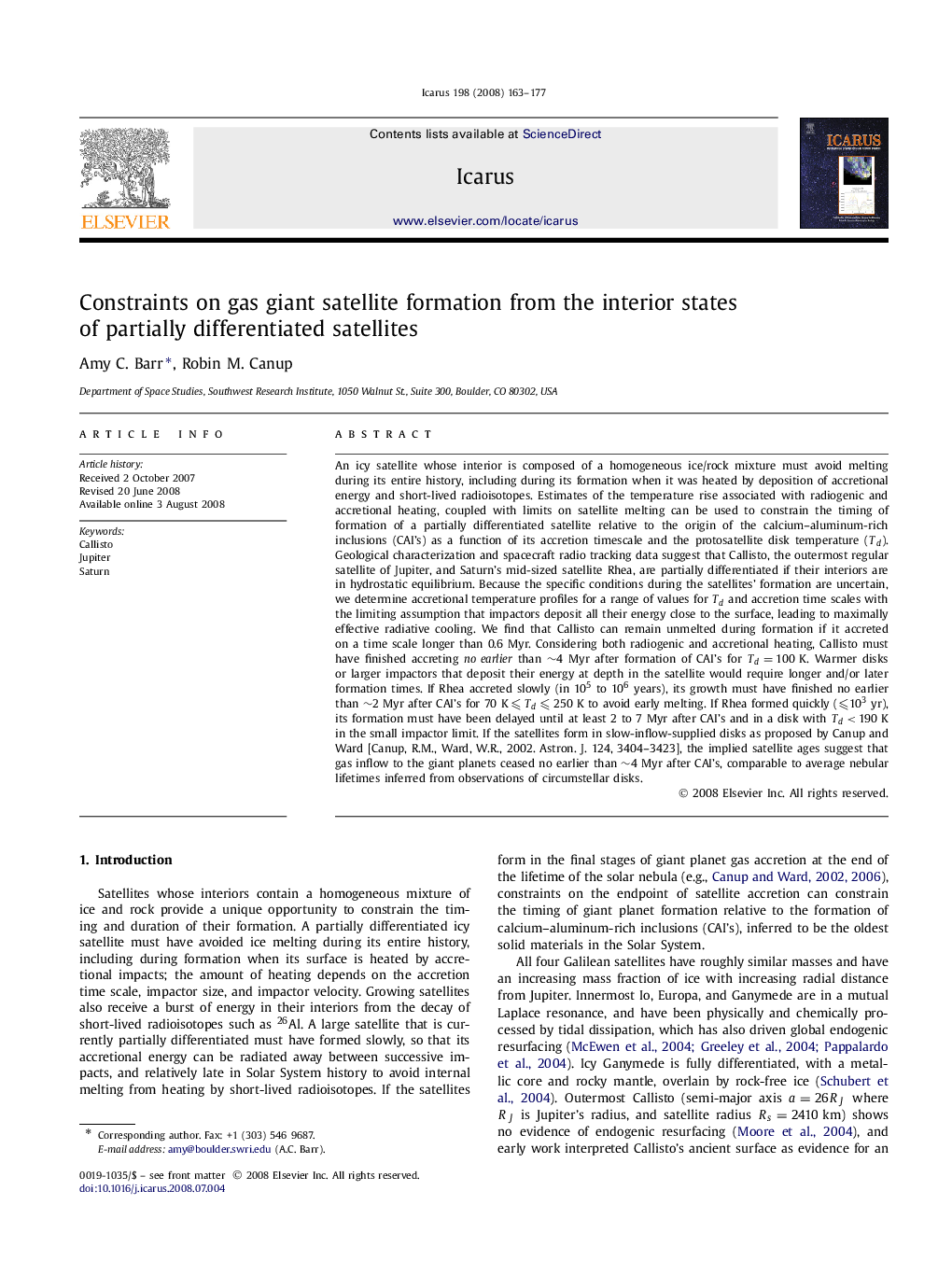| کد مقاله | کد نشریه | سال انتشار | مقاله انگلیسی | نسخه تمام متن |
|---|---|---|---|---|
| 1774790 | 1021174 | 2008 | 15 صفحه PDF | دانلود رایگان |

An icy satellite whose interior is composed of a homogeneous ice/rock mixture must avoid melting during its entire history, including during its formation when it was heated by deposition of accretional energy and short-lived radioisotopes. Estimates of the temperature rise associated with radiogenic and accretional heating, coupled with limits on satellite melting can be used to constrain the timing of formation of a partially differentiated satellite relative to the origin of the calcium–aluminum-rich inclusions (CAI's) as a function of its accretion timescale and the protosatellite disk temperature (TdTd). Geological characterization and spacecraft radio tracking data suggest that Callisto, the outermost regular satellite of Jupiter, and Saturn's mid-sized satellite Rhea, are partially differentiated if their interiors are in hydrostatic equilibrium. Because the specific conditions during the satellites' formation are uncertain, we determine accretional temperature profiles for a range of values for TdTd and accretion time scales with the limiting assumption that impactors deposit all their energy close to the surface, leading to maximally effective radiative cooling. We find that Callisto can remain unmelted during formation if it accreted on a time scale longer than 0.6 Myr. Considering both radiogenic and accretional heating, Callisto must have finished accreting no earlier than ∼4 Myr after formation of CAI's for Td=100 KTd=100 K. Warmer disks or larger impactors that deposit their energy at depth in the satellite would require longer and/or later formation times. If Rhea accreted slowly (in 105 to 106 years), its growth must have finished no earlier than ∼2 Myr after CAI's for 70 K⩽Td⩽250 K70 K⩽Td⩽250 K to avoid early melting. If Rhea formed quickly (⩽103 yr), its formation must have been delayed until at least 2 to 7 Myr after CAI's and in a disk with Td<190 KTd<190 K in the small impactor limit. If the satellites form in slow-inflow-supplied disks as proposed by Canup and Ward [Canup, R.M., Ward, W.R., 2002. Astron. J. 124, 3404–3423], the implied satellite ages suggest that gas inflow to the giant planets ceased no earlier than ∼4 Myr after CAI's, comparable to average nebular lifetimes inferred from observations of circumstellar disks.
Journal: Icarus - Volume 198, Issue 1, November 2008, Pages 163–177